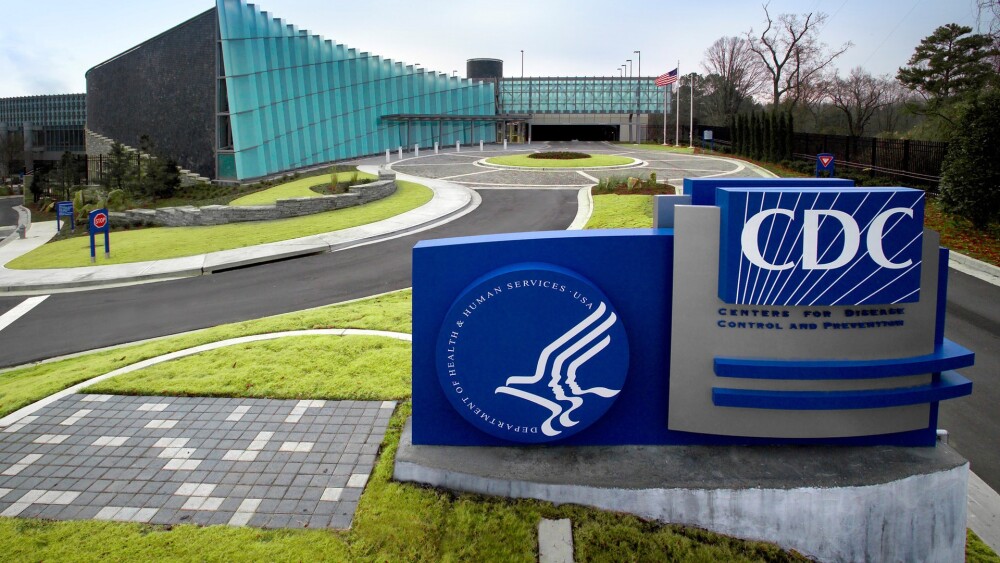Participants in trials of BrainStorm Cell Therapeutics’ NurOwn filed a Citizens’ Petition with the FDA earlier this month seeking a new review of the stem cell therapy that was rejected in 2022 based on real-world data and 90% survival in an expanded access program.
In 2016, President Barack Obama signed into law the 21st Century Cures Act, which encouraged the FDA to consider real-world evidence and clinical outcomes assessments in order to accelerate the development of new medicines. It’s this legislation neurologist Danielle Geraldi-Samara pointed to in an appeal Monday, imploring the FDA to approve BrainStorm Cell Therapeutics’ ALS treatment NurOwn, with a commitment to a Phase IV post-marketing study.
Geraldi-Samara’s appeal, published on Access Newswire, followed the submission to the FDA on July 3 of a Citizens’ Petition by participants in NurOwn’s trials, seeking the same.
In an email to BioSpace, lead petitioner Nick Warack, who lives with ALS, said the group believes the recently published expanded access program (EAP) data for NurOwn “demonstrate a dose-dependent response that enhances the already impressive results seen from the 3 doses in the Phase 3 trial.” In the EAP, nine of 10 Phase III participants survived more than five years. According to other published estimates, approximately 10% of people with ALS survive past five years after symptoms first appear, BrainStorm said in a June 16 press release announcing the results.
“At the end of the day, this defies logic,” Stacy Lindborg, BrainStorm board member and former co-CEO, said of the 90% survival rate, adding that it should open the door for a conversation.
After having its biologics license application rejected by the FDA in 2022, BrainStorm sought and secured an adcomm meeting the following year. The cell therapy was again brushed back, however, this time by advisors who voted 17-1 against its approval, and the biotech withdrew its BLA prior to its December 2023 PDUFA date.
These developments likely set the therapy back years. BrainStorm is currently working to secure funding for a Phase IIIb trial, which, according to Clinicaltrials.gov, was slated to begin late last month. Currently, the trial has an estimated completion date of May 2029. Meanwhile, patients are dying.
“[NurOwn] won’t be available to anybody until ‘29 and my son will be dead,” Mira (Mitze) Klingenberg, whose son Matt received three doses of NurOwn in the Phase III trial and seven more through the EAP, told BioSpace. “That’s not acceptable to me.”
In a public comment submitted to the FDA prior to an advisory committee meeting for NurOwn in September 2023, Geraldi-Samara asked the regulator “to consider the risk of a type II error-failing to approve a drug that does work.”
In her practice, Geraldi-Samara has treated “over a thousand people with ALS,” she states in her recent article, among them a young man named Kade Simons. Simons, a college baseball player, came to Geraldi-Samara’s practice three years after receiving NurOwn in BrainStorm’s Phase III trial.
“Most of all, I was astounded that Kade was still breathing on his own without the assistance of non-invasive ventilation,” Geraldi-Samara wrote.
For Lindborg, the advocacy of the patients and their supporters is not a surprise. “There are people that firmly believe how they’ve experienced the product . . . and they’re fighting for their lives,” she told BioSpace.
The Patients’ Case for NurOwn
For years, NurOwn trial participants—including Warack, Matt Bellina, Matt Klingenberg and Kade Simons—have collected their own data. Bellina, a Navy veteran, is the namesake behind the Matt Bellina Right to Try Bill, signed into law by President Donald Trump during his first term in May 2018. The bill allows terminally ill patients to access experimental treatments that have not yet received FDA approval.
In an interview with BioSpace, Klingenberg, along with Kandy Simons and Deb Bellina—self-styled as ‘the Mama Bears’—shared their sons’ journeys, emphasizing gains in progression-free survival, dose-dependent responses and tracheostomy-free survival, among other measures.
In BrainStorm’s Phase III trial, 34.7% of patients hit the primary treatment response endpoint of a 1.5 point per month improvement on the ALS Functional Rating Scale – Revised (ALSFRS-R). However, the placebo response of 27.7% exceeded those of others observed in contemporary ALS trials. Company executives have consistently pointed to a floor effect—which occurs when the scale of measurement is unable to capture the patient’s progression at the bottom end of the scale—to explain the miss.
Notably, Matt Bellina’s disease was too far advanced to make him eligible for the NurOwn trials. Bellina had already lost over half of his measurable function, per this scale. Yet the therapy worked for him, Deb said.
Under the Right to Try, Bellina received seven doses of NurOwn. After treatment, he reported increased muscle strength and a 23% improvement in forced vital lung capacity, and he no longer required a BiPAP machine to help him breathe at night.
As a mother, Deb said, it’s the little things you notice. When Matt would visit, “he would come in the back door [in his wheelchair], and I would turn around and take his sunglasses off,” she recounted. But on one sunny day in April, after Matt had received two doses of NurOwn, “I turned around to take his sunglasses off, and his sunglasses were gone. I looked at him, and I said, did you knock your head on the door? Where’d they go? And he lifted up his arm, and he had taken off his own sunglasses. I stood there, stunned. That was the first indication that something really different was happening here with this treatment.”
The gains for Bellina didn’t stop there, Deb said. “He went from there to being able to stand up out of the chair on his own.”
And Bellina isn’t alone. Kade Simons—who succumbed to ALS last year—was also a lifelong asthmatic, Kandy Simons said. But following his participation in the NurOwn trial, however, “I could probably count on one hand the number of times he ever needed his inhaler,” Simons said. According to the Citizens’ Petition, “respiratory function is the biggest predictor of survival in ALS.”
A centerfielder known for his speed, “Kade knew immediately from the very first injection” that he had gotten NurOwn and not the placebo, “because he knew his body felt better.”
And Simons wasn’t alone in seeing unprecedented gains. Mitze Klingenberg shared with BioSpace a video of her son Matt standing up from his wheelchair. “Pretty darn good for 8 years into ALS,” she wrote in the accompanying email.
In addition to the real-world data and personal stories, both Warack and the Mama Bears emphasized a comparison between NurOwn and cancer drug approvals.
“NurOwn’s survival data exceeds the survival data used to support accelerated approval of many cancer therapies,” Warack wrote in his email to BioSpace, adding that the data from the Phase III trial were “both statistically significant and clinically meaningful for those earlier in ALS progression (akin to Stage I/II cancer).”
“What’s good enough for cancer, unfortunately is not good enough for ALS,” Klingenberg added. “[The Oncology Center of Excellence has] kind of embraced novel treatments, new ways of trying things, and I just don’t think that that has happened in ALS.”
Lindborg, who left her position as BrainStorm co-CEO last year to helm immunotherapy biotech Imunon, told BioSpace in a follow-up email that “while NurOwn addresses an unmet need, the ALSFRS-R and biomarkers [such as neurofilament] are not as well validated as endpoints in oncology.
“However, given the totality of evidence, including the survival data from the EAP, and the robust biomarker data that exists in addition to clinical data, the comparison that the authors of this petition make to accelerated approval seems reasonable to me.”
The Citizens’ Petition is addressed to Health Secretary Robert F. Kennedy Jr., FDA Commissioner Marty Makary and Center for Biologics Evaluation & Research Director Vinay Prasad. In his email informing BioSpace of the petition, Warack pointed to Makary’s recently proposed regulatory pathway, which would allow for the conditional approval of rare disease drugs based on “a scientifically plausible mechanism.”
“We also believe that NurOwn meets the Commissioner’s new ‘plausible mechanism of action’ threshold for conditional approval for rare diseases with critical unmet needs,” Warack wrote. “[It also] aligns with Secretary Kennedy’s commitment to end the war on stem cell therapies and the President’s commitment to expedite getting gene and cell therapies to market for rare diseases with critical unmet needs.”
But even before a potential approval, the petition’s organizers are hoping for a response from the FDA. “The very first ask is that they look at the petition,” Klingenberg said. “Please respond to us and give it due diligence.”
In an email on Wednesday, an FDA representative told BioSpace the FDA is reviewing the petition to reconsider BrainStorm’s NurOwn and will respond directly to the petitioner.
BrainStorm Battles On
Patient advocacy is nothing new in the ALS space. Three years ago, more than 1200 patients with ALS, along with community advocates, called upon FDA advisors to approve Amylyx’s Relyvrio, the patients speaking from their personal experience with the drug. Later that month, Relyvrio was indeed approved—only to fail its own Phase III trial a year-and-a-half later. Honoring a promise, Amylyx’s leaders withdrew the drug from U.S. and Canadian markets.
Like with the NurOwn petitioners, this was an appeal to the FDA to look beyond only the registrational trial. In the case of NurOwn, it’s not only the trial participants who have been transparent with their data; BrainStorm also continues to share results, publishing a correction to its Phase III analyses in August 2022 and new biomarker data in July 2023. The company has also discussed and debated the data with several experts.
“There were a host of people that we allowed in at all levels of the data,” Lindborg said, specifically pointing to renowned Mayo neurologist Tony Windebank, who presented the NurOwn clinical data at the March 2023 adcomm and shared his expert opinion. According to the Citizens’ Petition, Windebank said, “I think this data is compelling & it should be approved. . . . While not everyone responds to the treatment, there are clearly a SIGNIFICANT number who do. I have clearly seen some people STABILIZE in a way that I have never seen in any other trial.”
Ultimately, Lindborg said, NurOwn’s data package was “compelling” in an ALS space that has seen a lack of therapeutic progress and where there exists an “enormous unmet need.”
She added that in the delicate balance between regulatory rigor and patient access, the biotech funding environment could be the death knell for a therapy.
“If you decide the need is going to be completing another trial . . . with these micro-cap companies, it could mean that the product doesn’t move forward,” Lindborg said. “The reality is, it’s never a sure thing that you’ll be able to see through the funding.”
Regardless of any potential FDA response to the Citizens’ Petition, Lebovits said BrainStorm is committed to completing the Phase IIIb trial but acknowledged that funding for that trial was still in question.
“Any positive regulatory action regarding NurOwn’s path forward would undoubtedly change the landscape for funding our Phase 3b trial,” he told BioSpace in an email. “The fact is, FDA decisions have a profound impact on how investors perceive a company’s prospects and its ability to secure capital.”
Lebovits also emphasized the importance of collecting as much data as possible on NurOwn, noting that an approval is the fastest way to secure more data, providing “wider and longer-term real-world use may provide even more comprehensive data than a traditional trial alone could achieve.”
While both BrainStorm and the petitioners attest that the biotech had no knowledge of the Citizens’ Petition prior to the end of June, Lebovits said, “This may be a second chance for FDA to review this again. Every product has its own pathway.”









